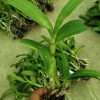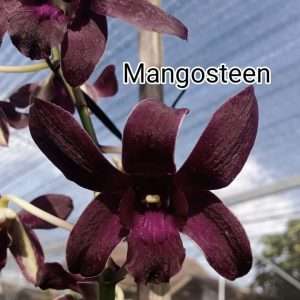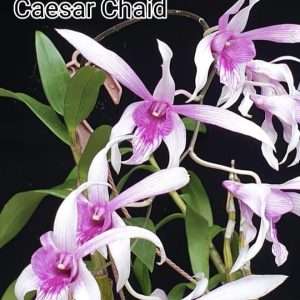Description
-
Type: Epiphytic orchid (grows on trees in nature).
-
Origin: Hybrid, not naturally occurring.
-
Size: Medium-sized plant with tall, upright canes.
-
Flowers: Multiple blooms per spike, usually 2–3 inches wide, with rich coloration and a glossy texture.
-
Blooming Season: Mainly late winter to spring, though some rebloom under ideal conditions.
🌿 Caring and Handling Tips:
🌞 Light:
-
Requires bright, indirect light.
-
Can tolerate some morning sun, but avoid harsh afternoon rays which can scorch leaves.
-
A south or east-facing window with filtered light is ideal.
💧 Watering:
-
Water thoroughly when the potting mix is nearly dry.
-
Typically once or twice a week during growing season; reduce in winter.
-
Avoid letting roots sit in water—good drainage is essential.
🌡️ Temperature:
-
Thrives in warm to intermediate temperatures:
-
Day: 75–85°F (24–29°C)
-
Night: 60–65°F (16–18°C)
-
-
Can tolerate slightly cooler temps during rest periods after blooming.
💨 Humidity & Airflow:
-
Prefers 50–70% humidity.
-
Use a humidity tray or room humidifier if air is too dry.
-
Good air circulation helps prevent fungal issues.
🌱 Potting Mix:
-
Use a well-draining orchid mix: typically bark-based with perlite and charcoal.
-
Repot every 2–3 years or when the medium starts to break down.
🌼 Feeding:
-
Feed with a balanced orchid fertilizer (20-20-20) every 2 weeks during the growing season.
-
Reduce to once a month or stop feeding entirely during winter dormancy.
✂️ Post-Bloom Care:
-
Do not cut the canes even after flowering—they may rebloom or support new growth.
-
Remove only spent flower spikes and dead leaves.
💡 Extra Tips:
-
Provide a slight cool-down period in fall to encourage flowering.
-
If leaves become leathery or wrinkled, it may be underwatered or exposed to too much light.
-
Monitor for pests like scale, spider mites, or mealybugs, especially on the undersides of leaves.











 Phalaenopsis Sweet Heart with spike
Phalaenopsis Sweet Heart with spike  Caesar Chaid
Caesar Chaid  Thailand Red
Thailand Red  (Boonchu Gold x Burana Green Star)
(Boonchu Gold x Burana Green Star)
Reviews
There are no reviews yet.